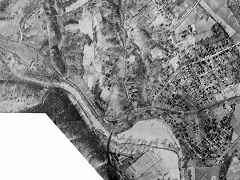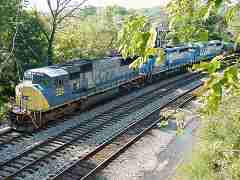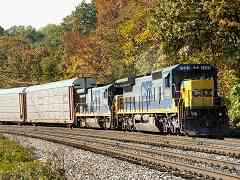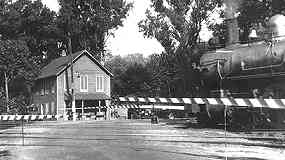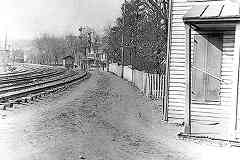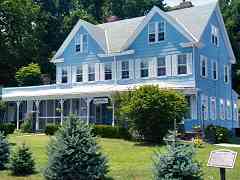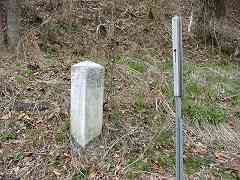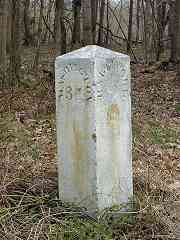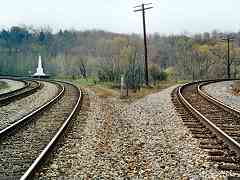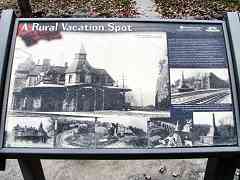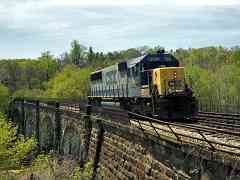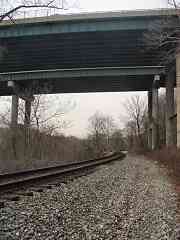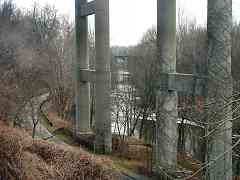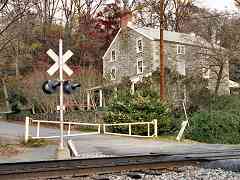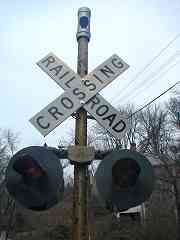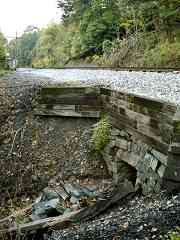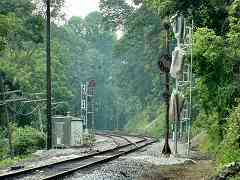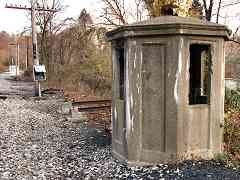|
The community of Avalon shares its name with the Avalon Nail and Iron
works that had been a major business at this location. Lured by
the power of falling water, many manufacturing industries were attracted
to the Patapsco River valley. These industries were B&O customers,
and one of the reasons the railroad chose this route.
Unfortunately, a terrible flood in 1868 either destroyed or damaged much
of the valley (as well as miles of the railroad). B&O recovered and
rebuilt, but most of the businesses did not. Since then, nature has
reclaimed the areas previously occupied by factories, and only relics
remain. Later floods and the availability of other power sources
encouraged businesses to locate elsewhere, and most of the
land is now part of Patapsco State Park.
B&O's Avalon Station had been on the right, on the near side of the
tracks. The grade crossing shown here (Gun Road) is now permanently closed
in order to prevent "back door" access to the state park. Historical
accounts attribute creation of Gun Road to George Washington.
Links:
Patapsco Valley Park Info,
1903 plat
| 